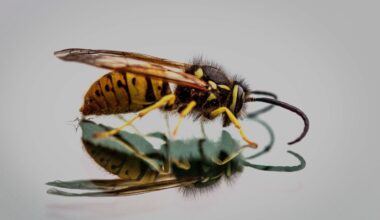The start of a new year typically has people thinking about changes they want to make. And that’s all well and good. Nothing wrong with a bit of self improvement. But in planning for the new year, it wouldn’t hurt to remember the global climate change goals we’re all supposed to be working towards. For example, if you’re one of the billionaires taking 17 minute flights and causing enormous amounts of carbon emissions in the process, a lifestyle change to make in 2023 could be to stop doing that. And never do that again. For the rest of us lowly ground transport takers, while our individual actions aren’t as impactful as that of billionaires, there are billions of us, so our impact and individual decisions can add up. We’ve rounded up 5 free, eco-friendly lifestyle changes to make in 2023.

1. Buy Less
Back in the 70s we were exposed to about 500 ads a day. Now, it’s between 4,000-10,000. We’re constantly being sold stuff and urged to participate in a consumerist culture. And we’re falling for it. The average American house holds over 300,000 items. And even though house sizes are 150% larger since the 80s, 1 in 10 Americans also rent offsite storage. And while there’s not anything inherently wrong with buying things, what we buy and how often we buy it might be something to look at.
Take water bottles as an example. You could buy a bottle of water every day, spending about $400 a year and sending 365 plastic bottles to a landfill, or ideally a recycling facility. Or, you could invest in a reusable water bottle and a filter jug or tap attachment. These’ll cost you less than $100 for both and you could save hundreds of plastic bottles from the world.
No-spend months are a popular financial trend that can help you reset your mindset and habits around shopping. Forcing yourself to slow down and really consider what you need, or where you might be overspending, can be a helpful exercise in reducing your consumption and living a more eco-friendly lifestyle.
Tips
- Buy reusable items instead of single use and disposable. Shopping bags, straws, razors and so many other things come in reusable forms now. While they’re typically a little bit more expensive to buy at first, they’ll save you money, and the planet from extra waste, in the long run.
- Avoid fast fashion and invest in quality, timeless pieces instead. Clothing production has doubled in the last 15 years but how much we wear our clothes has dropped by 40%. Some garments are even thrown out after just seven to ten wears. Buying more durable pieces can help extend the life of your clothes and with higher quality material, they can also be repaired easier if damaged.
- Try a “no-spend” month. No spend months have become increasingly popular, some people even do a no spend year. And while jumping straight into a no spend year might be a bit much for most, picking a period of time to not spend money in can be helpful. Especially if you’re prone to impulse buying or if your consumption habits have gotten a bit out of hand lately. Even a no spend day can help if you’re really trying to cut back.
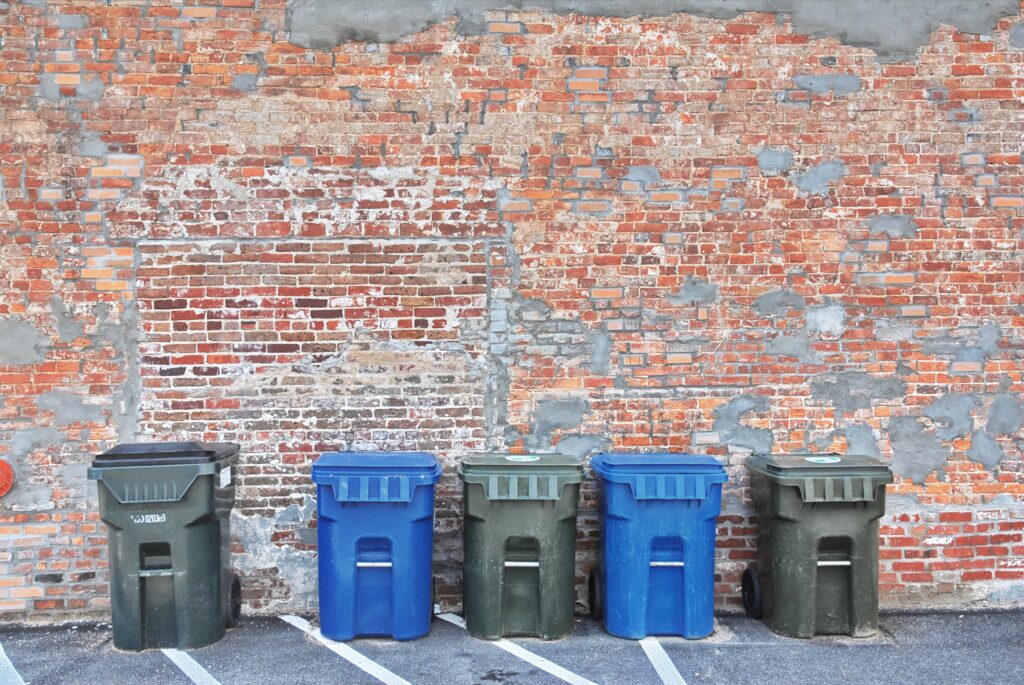
2. Learn How To Recycle
About 25% of recycling is contaminated by items that aren’t meant to be there. Things like plastic straws and take-out boxes end up in the recycling out of confusion or “wish-cycling”. Wish-cycling is when you put something in recycling hoping it can be recycled. But because they can’t be recycled and they’ve contaminated the recycling around them, it all then goes to a landfill or incinerator.
Unfortunately there’s no national rules on recycling or guaranteed access to recycling facilities everywhere. Every locality has their own rules and resources so you need to investigate and find out how to recycle properly in your area.
Tips
- Make sure to clean and dry your containers. Leaving any food residue or product in your containers can contaminate other clean recycling and sends the whole load to the landfill. Keeping your recycling free from food can also help keep wild animals from rooting through your garbage at night.
- Separate different materials. Even if you have single-stream recycling, where everything goes into one bin, chances are everything can’t go into that one bin. Batteries, electronics, tires and ink cartridges often can’t go in a blue bin and need to be recycled at a special facility.
- Avoid plastic bags and keep containers loose. One rule that seems to be fairly common across most areas is keeping plastic bags and black garbage bags out of your recycling bin. Bags can get tangled in machinery and cause clogs in the best case scenario and damage in the worst case.
For more tips on recycling, read 10 Tips for Easy Recycling at Home.
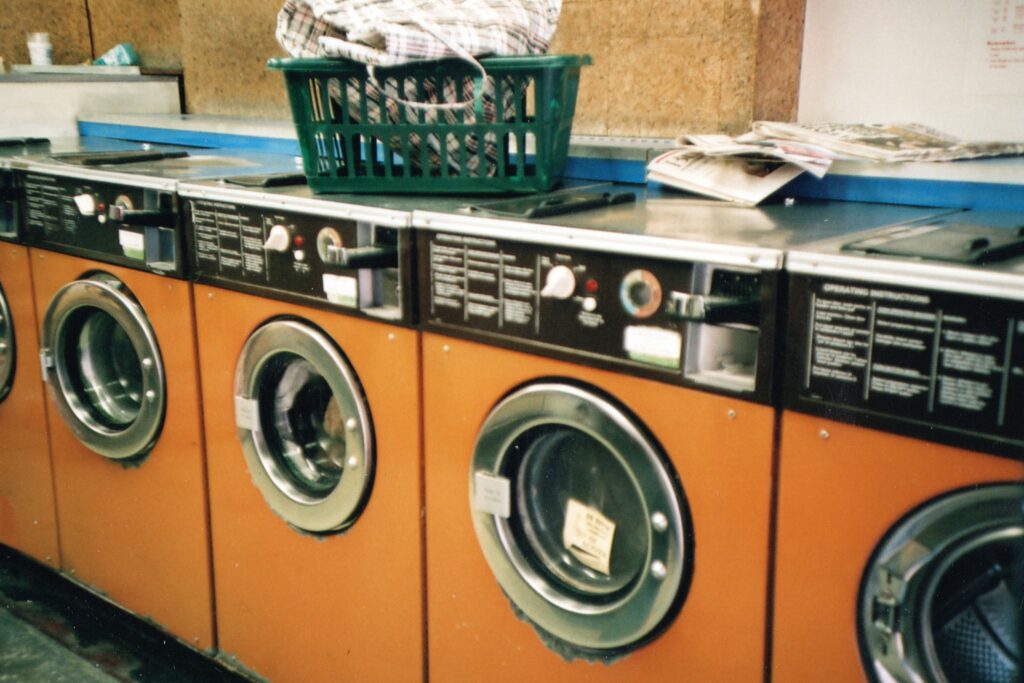
3. Wash Clothes Less
We’ve all heard about washing your clothes at low temperatures. Washing at 30 degrees celsius to save energy has been circulating for years now. And not without reason, washing at this temperature can lower your energy use by 40%–60%. It can also help your clothes last longer and avoid shrinking or colour running.
In 2023, it’s time to add another washing rule to our eco-friendly lifestyle list and start washing our clothes less often. Clothes release microfibres and microplastics every time they’re washed, up to 700,000 in a single cycle. The average household in Canada and the U.S. releases the equivalent of 10 blue whales worth of microfibres every year. From our washing machines they end up in our oceans, rivers and lakes and even our food.
Apart from wear-once items like socks and underwear, most clothes can go three or four wears before you need to wash them. Assuming you haven’t spilled anything down the front. Wool and cashmere can last a month between washes and denim should be washed as little as possible, if at all.
Tips
- Wash a full load to reduce friction between clothes. The freer your clothes are to float around in the washing machine, the more microfibres they release. The amount of microfibres released can be halved just by moving from a small to large load.
- Wash with a liquid detergent. Using a detergent powder can cause more abrasion in fabrics leading to more shedding and more microfibres releasing.
- Air dry instead of tumble dry. Tumble drying releases just as many microfibres as washing. If you have the time, skip the tumble dryer and air dry instead. The planet and your energy bills will thank you.
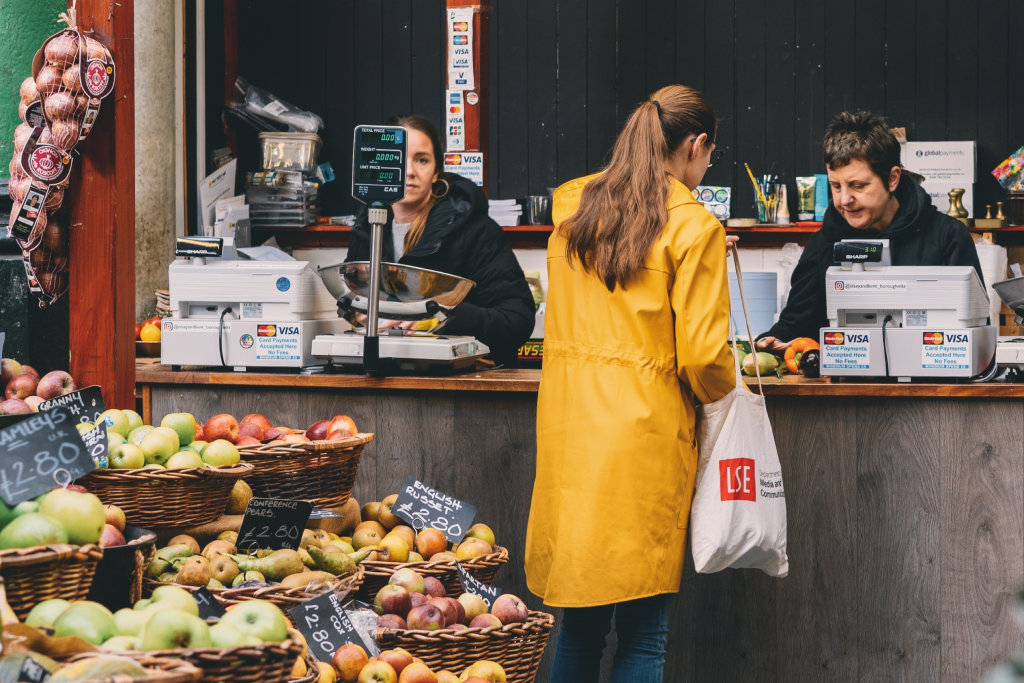
4. Shop Local
Shopping local is one of those eco-friendly lifestyle tips that sounds easy on the face of it. But given how globalized we are now, buying local isn’t as easy as you might think. Chances are if you live somewhere like Canada and want some grapes, you’ll have to take them along with the 15,000 km they’ve had to travel from South Africa. Or if you want a new t-shirt, that’ll travel at least 11,000 km from the manufacturing plant in India. Moving these items across the planet causes huge amounts of emissions. Global food miles alone account for nearly 20% of the entire food-system emissions.
Buying local isn’t as easy as going to your local shop and buying what they have. More often than not, and especially at big-box stores, you’re buying things that have been imported and have already traveled tens of thousands of kilometers to get to you. But that doesn’t mean that everything you buy has to travel thousands of kilometers. If you’re lucky enough to have a farmers market or stall beside you, they can be a great place to start reducing your food miles. By buying as close to the source as possible you can help reduce emissions caused by travel. It also helps keep resources and money in your community, supports local businesses and provides a long-term sustainable option for others.
Tips
- Find a farmers market or stall. They’ll give you direct access to seasonal fruit and vegetables, without the packaging. Keep an eye out for seasonal farm events too, where you can pick your own apples, pumpkins etc. getting even closer to the source.
- Find local butchers, bakers and candlestick makers. Support your local small businesses and they’ll also likely have a wealth of knowledge and expertise to share. They can help you find the best ways to use your item and make it the most efficient or zero-waste possible – think butchers and their cheap or off-cut suggestions or bakers and their recipe offerings.
- Get to know your local craftspeople. Your local essentials don’t just have to stop at bread and meat, local craftspeople can also offer a plethora of goodies. See if you have local carpenters, leatherworkers, blacksmiths or yarn spinners first before you go off on your next online shopping adventure. You never know what local talent might be on your doorstep.
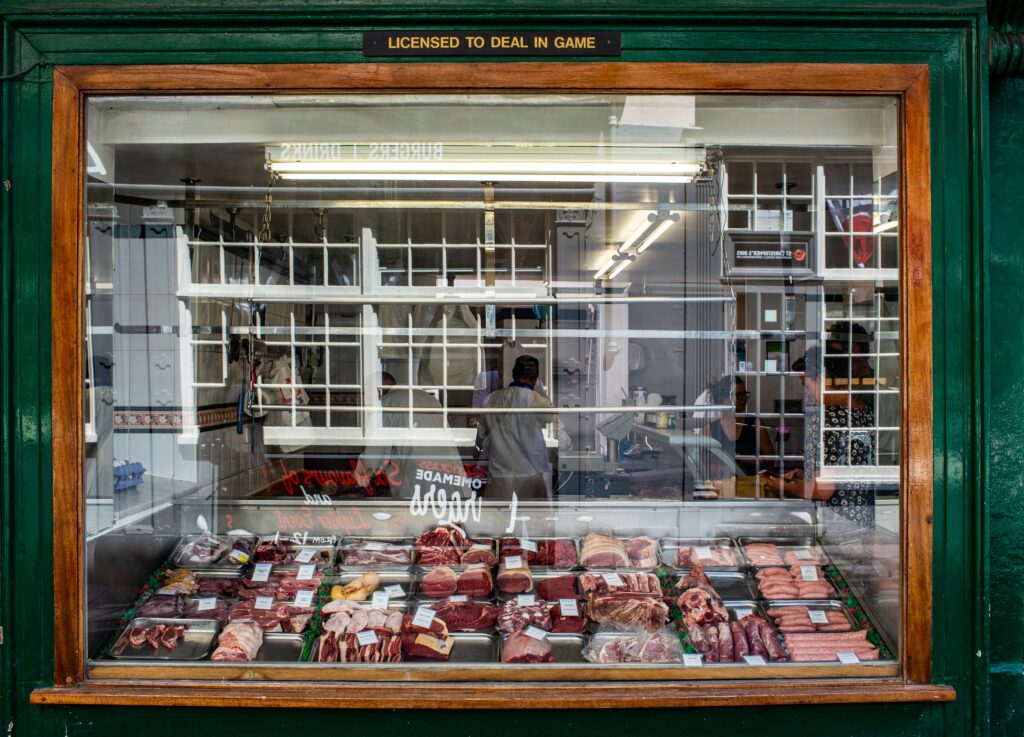
5. Eat Less Meat
Meat is responsible for at least 60% of greenhouse gas emissions from food production. Beef produces the most at 99 kg CO2eq per 1 kg, compared to rice at 4.5 kg CO2eq per 1 kg. But you don’t have to go completely vegetarian to have an impact on the environment and live a more eco-friendly lifestyle, although in 2010 it was estimated that 20% of the world’s population were vegetarian. An average household switching to plant based just one day a week can save 0.46 tCo2eq, the same as a zero mile diet.
Movements like Meatless Monday (eating meat free on Mondays) and Veganuary (eating plant based for January) have been growing in popularity for years now. Veganuary in particular has grown 5 times since it was launched in 2014. With scientists predicting that we’ll all have to go vegetarian by 2050, it might be time to start perfecting your vegetarian recipes now.
Tips
- Try going meatless one day a week. If everyone in the U.S. went meatless for just one day a week, it’d save 100 billion gallons of water and 70 million gallons of gas. Check out recipes on the Meatless Monday website for some inspiration.
- Make your favourite dish vegetarian. This probably won’t work if your favourite dish is steak, although portobello mushroom steaks are pretty amazing. But a lot of dishes can be made vegetarian with a few simple switches. You might even end up liking the vegetarian version more in the end.
- Explore meat substitutes. You don’t have to make everything from scratch to eat vegetarian. Meat substitutes have come a long way in the last few years, and while it might take some experimentation, with so many options you’re bound to find something you like.
For more on why meat is bad for the environment, read “5 Meats that are Bad for the Environment“
For more tips, check out last year’s article “5 Free Eco-Friendly Lifestyle Changes to Make in 2022“
Sustayn is designed to present the most useful recommendations for environmentally friendly approaches and items. We update links when possible, but note that links can be broken and subject to change.


